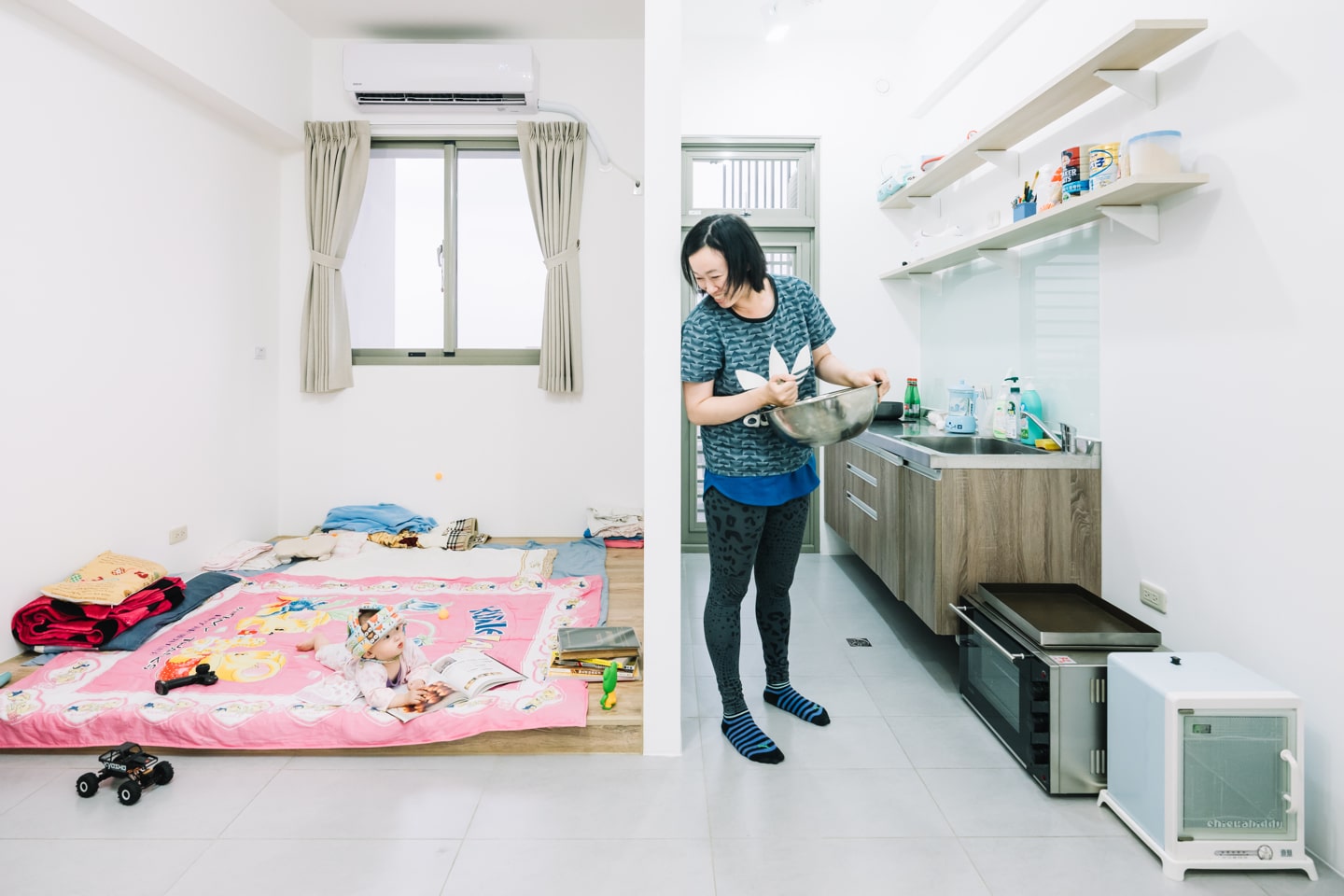ABOUT
SMALL TALK
家常對話
「都市裡的集合住宅如何成為有溫度的社區?」
“How does collective housing in urban areas transform into connected communities?”

有別於鄉鎮社區的緊密人際網絡,都市裡的高樓大廈往往成為阻絕人們互動的牢籠,多元、相異的背景與忙碌的生活型態,使對話更難發生,與鄰居的互動經常僅止於電梯裡的點頭致意。
Unlike close networks in rural areas, urban apartments and skyscrapers often encage dwellers and discourage engagements. Diverse backgrounds and busy lifestyles reduce conversations with neighbors to brief exchanges in elevators.



近年來,在房價高漲的城市裡,政府開始推動興辦社會住宅,落實居住正義。在「公有出租住宅」與「公共藝術」之間,形成有趣的交會點——社會住宅做為具循環性的公共資產,拉長時間尺度來看,其為整個社會共同「分享」的居住空間,我們相信公共藝術也應能基於開放分享的精神,在藝術創作、議題形塑的過程中,逐漸發展一種分享共學的模式。
With an increase in housing prices in recent years, the government has started to promote justice in social housing. In Taiwan, all government-led social housing communities have their own public arts programs. So, both social housing and public arts share value in this space and are promoted, creating an interesting intersection. In a longer timeframe, social housing is essentially a shared asset for society as a whole. We believe that the public art programs for social housing can also create circular community assets.
With an increase in housing prices in recent years, the government has started to promote justice in social housing. In Taiwan, all government-led social housing communities have their own public arts programs. So, both social housing and public arts share value in this space and are promoted, creating an interesting intersection. In a longer timeframe, social housing is essentially a shared asset for society as a whole. We believe that the public art programs for social housing can also create circular community assets.


《家常對話》亦是——家,常對話。做為全臺首例的社會住宅計畫型公共藝術,我們以藝術為媒介,開啟與自我、他人、城市的對話,並以家為尺度,透過關係的重構、邊界的鬆動,搭建一個讓對話能有機發生的場域。
Small Talk also covers family scenarios. As the first public art program of social housing projects in Taiwan, we use art as a catalyst to initiate conversations with ourselves, others and cities. Built around homes, it aims to reconstruct relationships, open up boundaries, and offer a space where conversations happen organically.
Small Talk also covers family scenarios. As the first public art program of social housing projects in Taiwan, we use art as a catalyst to initiate conversations with ourselves, others and cities. Built around homes, it aims to reconstruct relationships, open up boundaries, and offer a space where conversations happen organically.
我們走入家戶,採集生命故事;共同創作,創造家與家的交往。以貼近日常生活的公共藝術,啟發每一個人與生俱來的創作能量,將「空間」賦予生命力,成為充滿生活感的「地方」。
We collect life stories from our residents. By creating art pieces together, families get to know each other. We inspire creative energy that melds with everyone through public art in daily life. We transform a space into a community by injecting it with life and energy.
Reference: 公共藝術相關論述書籍
- 林志銘 (2017) 臺灣公共藝術學Ⅰ 黑色‧公共藝術論。臺北市:暖暖書屋。
- 林志銘 (2017) 臺灣公共藝術學Ⅱ 藍海‧公共美學。新北市:暖暖書屋。- Suzanne Lacy (2004)《量繪形貌:新類型公共藝術》。吳瑪俐等譯 。臺北市:遠流出版。
- Catherine Grout (2017)《藝術介入空間》。姚孟吟譯。臺北市:遠流出版。- Gran Kester (2006)《對話性創作:現代藝術中的社群與溝通》。吳瑪俐、謝明學、梁錦鋆譯。臺灣:遠流出版。
- 文化部公共藝術官方網站 https://publicart.moc.gov.tw/
- 帝門藝術教育基金會 https://www.deoa.org.tw
We collect life stories from our residents. By creating art pieces together, families get to know each other. We inspire creative energy that melds with everyone through public art in daily life. We transform a space into a community by injecting it with life and energy.
Reference: 公共藝術相關論述書籍
- 林志銘 (2017) 臺灣公共藝術學Ⅰ 黑色‧公共藝術論。臺北市:暖暖書屋。
- 林志銘 (2017) 臺灣公共藝術學Ⅱ 藍海‧公共美學。新北市:暖暖書屋。- Suzanne Lacy (2004)《量繪形貌:新類型公共藝術》。吳瑪俐等譯 。臺北市:遠流出版。
- Catherine Grout (2017)《藝術介入空間》。姚孟吟譯。臺北市:遠流出版。- Gran Kester (2006)《對話性創作:現代藝術中的社群與溝通》。吳瑪俐、謝明學、梁錦鋆譯。臺灣:遠流出版。
- 文化部公共藝術官方網站 https://publicart.moc.gov.tw/
- 帝門藝術教育基金會 https://www.deoa.org.tw

CONCEPT
共居住宅裡的關係美學
Relational aesthetics in collective housing
在現代都市集合住宅裡,交織多元背景的「新住民」,以藝術為媒介,開啟與自我、他人、城市的對話。
“New residents” with diverse backgrounds live in modern collective housing properties in urban areas. Art as a medium inspires conversations with self, others and cities.
因共同價值而聚集的群眾
Groups with collective values
翻轉專業創作者為主體的單向模式,在藝術行動中集聚住民想法,打開協同創作的空間。
Instead of the unilateral, artist-centered model, art activism aggregates ideas from residents and offers spaces for collaborative efforts.
住民觀點的生活經驗作為創作根基
Based on life experiences from residents
透過家戶的記憶故事採集,探訪建築裡的生命經驗,藝術創作者與居民共同拓展家的想像邊界。
By collecting memories, stories and life experiences, artistsand residents are able to expand the imaginary boundaries of home together.
